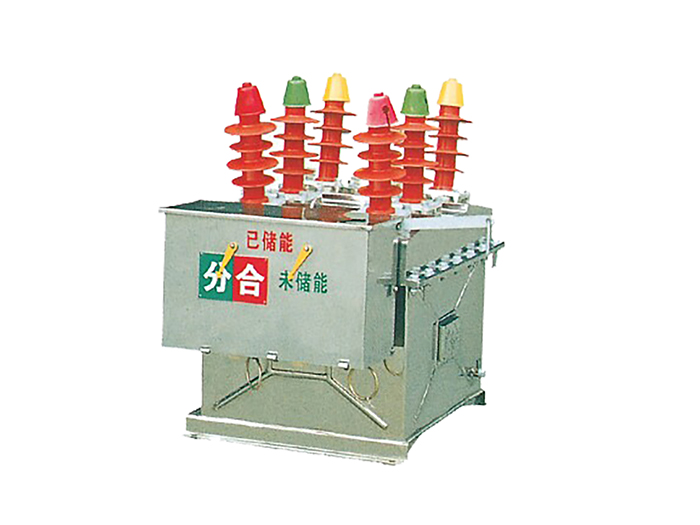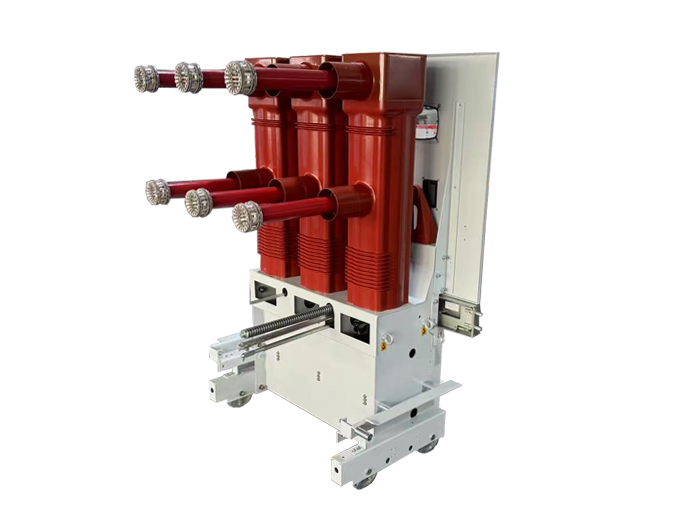In the intricate web of modern electrical systems, circuit breakers are the unsung guardians—springing into action to halt overloads, short circuits, and faults before they spiral into costly damage or danger. Among the most widely used are Air Circuit Breakers (ACBs) and Vacuum Circuit Breakers (VCBs). While both share the core mission of protecting circuits, their inner workings, design, and ideal roles differ sharply. Let's dive into what sets them apart, where each excels, and how to decide which one fits your needs—all while highlighting why these differences matter in real-world applications.
Air Circuit Breakers (ACBs) rely on a simple yet effective principle: when a fault occurs and contacts open, the electric arc that forms between them is snuffed out by the surrounding air. Think of it as nature's coolant—air cools the arc, breaks its continuity, and prevents re-ignition, safely interrupting the circuit.
ACBs are workhorses of low-voltage systems, typically handling up to 1,000V. You'll find them in industrial panels, distribution
boards, and motor control setups, where their straightforward design shines. Key components include sturdy contacts, an arc chute (to channel and cool the arc), and a reliable operating mechanism—all working together to keep low-voltage circuits in check.
Vacuum Circuit Breakers (VCBs) take a more advanced approach: they extinguish arcs in a vacuum. Inside a sealed vacuum interrupter, when contacts separate during a fault, the arc forms briefly but can't survive—vacuum lacks the particles needed to sustain it, so the arc collapses almost instantly. This makes VCBs masters of rapid, clean interruption.
Built for medium to high voltages (ranging from 1,000V up to 72,500V or higher), VCBs thrive in demanding environments. Substations, power grids, and industrial plants rely on them for their precision. Core components include the vacuum interrupter (the heart of the system), durable contacts, and a compact arc chamber—all engineered for efficiency.

The biggest divide lies in how they stop arcs. ACBs use ambient air—a readily available, low-cost medium that works well for low voltages but struggles with higher energy arcs. VCBs, by contrast, use a vacuum: a near-perfect insulator that snuffs out arcs faster and more reliably, even under high-voltage stress. This difference alone dictates their primary use cases.
In ACBs, the arc is tamed by air flow and cooling, often guided by arc chutes that split and dissipate the arc. It's effective for low voltages but slower—meaning contacts can wear more over time, especially with frequent switching.
VCBs, though, leverage vacuum's unique properties: without gas molecules to carry current, the arc can't persist. It extinguishes in microseconds, reducing contact wear and extending the breaker's lifespan. This speed makes VCBs far more efficient for high-voltage, high-frequency operations.
ACBs are confined to low-voltage systems (up to 1,000V). They're ideal for distributing power in factories, commercial buildings, or residential grids where voltages stay modest.
VCBs, however, excel in medium to high voltages (1,000V to 72,500V+). Whether it's a substation stepping down grid power or a renewable energy plant managing fluctuating outputs, VCBs handle the higher energy loads with ease.
ACBs tend to be bulkier. Their air-based arc quenching requires more space for arc chutes and ventilation, making them a better fit for rooms or panels with ample space.
VCBs, thanks to vacuum technology, are compact. The vacuum interrupter eliminates the need for large cooling systems, so they fit neatly into tight spaces—perfect for urban substations, indoor switchgear, or crowded industrial setups.
Pros:
Cost-effective: They're generally cheaper to manufacture and install, making them a budget-friendly choice for low-voltage needs.
Simple to maintain: Their straightforward design—fewer complex parts—means easier inspections and repairs.
Versatile for low-voltage: Reliable in industrial panels, motor protection, and small-scale distribution networks.
Cons:
Limited by voltage: They can't handle medium or high voltages, so they're out of the question for grid-scale or heavy industrial use.
Slower arc quenching: This leads to more contact wear, requiring more frequent maintenance.
Bulky: Their size can be a drawback in space-constrained environments.
Pros:
Superior arc control: Faster, cleaner interruption minimizes damage and extends contact life.
Compact and durable: Smaller footprint fits tight spaces, and vacuum interrupters resist wear, boosting longevity.
Low maintenance: Sealed vacuum chambers reduce the need for regular checks—ideal for remote or hard-to-access setups.
High-voltage reliability: Thrives in medium-to-high voltage systems, from substations to renewable energy grids.
Cons:
Higher upfront cost: Advanced vacuum technology and precision manufacturing make them pricier than ACBs.
Overkill for low voltages: Their cost and complexity aren't justified for simple, low-voltage circuits.

Low-voltage distribution: Powering factories, office buildings, and residential complexes with voltages under 1,000V.
Motor protection: Safeguarding industrial motors from overloads in manufacturing lines.
Control panels: Managing power flow in electrical switchgear and distribution boards for small to medium setups.
Medium-to-high voltage grids: Substations, transmission networks, and industrial plants handling 1,000V+.
Indoor and outdoor setups: Indoor high-voltage VCBs fit in enclosed switchgear, while outdoor models withstand weather in substations.
Renewable energy integration: Protecting solar farms and wind turbines, where stable switching under variable voltages is critical to grid integration.
ACBs and VCBs aren't rivals—they're complementary tools, each mastering its voltage range. ACBs deliver affordable, reliable protection for low-voltage systems, while VCBs excel in medium-to-high voltage environments, offering speed, durability, and compact design.
For applications that require reliable and efficient power distribution, particularly in substations, renewable energy systems, and high-voltage networks, YIFA offers high-quality solutions, including the hv vacuum circuit breaker, indoor high voltage vacuum circuit breaker, and outdoor high voltage vacuum circuit breaker, designed to meet the rigorous demands of modern electrical infrastructure.